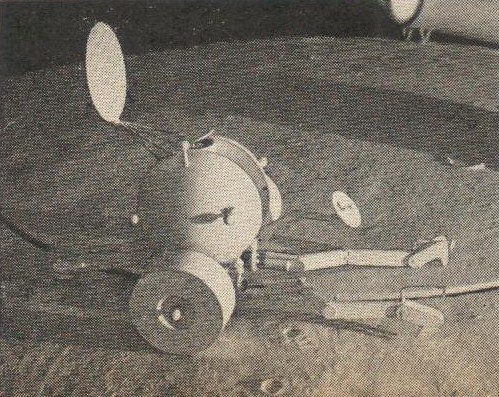
In the early ‘60s, as part of the preparations for the Apollo manned moon landing mission, the Jet Propulsion Lab planned a follow-on program to its very successful ‘hard’ landing ‘Ranger’ program, which gave the first close-up views of the moon’s surface. The proposed ‘soft’ lander program was called ‘Surveyor’. An initial concept was for it to disgorge a moon surface-traversing vehicle to conduct a neighborhood survey near its landing position. It was to be commanded by a TV – radio control guidance link. This link was to be relayed to and from the moon via the Surveyor’s earth communication system. A lunar rover competition was opened and by end of 1961 there were responses from at least 10 leading space firms including Space-General Corp., Sperry Rand, and RCA.
When it was determined that the Atlas rockets could not lift the Surveyor with an added payload of a Lunar Rover, the project was discontinued.
One-ton globular chariot, designed by Sperry Rand, hauls itself along by claws on two joited arms. Light hollow rollers of spun wire support is weight, and a smaller roller behind them balances it. Besides propelling the vehicle, the claws can pick up samples of the moon's crust. These may be analysed automatically by a little lab inside the globe-or stuffed into a small rocket and shot back to earth, whence the launching command would come.